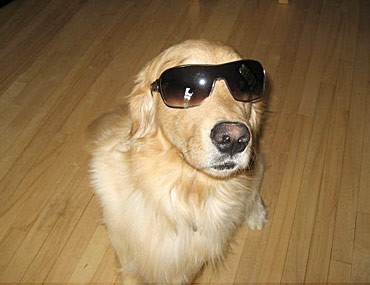Overview
Glaucoma is an eye condition caused by an abnormally high amount of pressure that builds up in the eye. The eye maintains a constant production and drainage of the fluid in the eye, called aqueous humor. When there is a problem with the drainage of this fluid, pressure builds within the eye. This high pressure can have severe side effects including damage to the optic nerve, which can result in blindness.
Symptoms
Glaucoma is a very painful condition; its most common sign is bulging of the eyes. Glaucoma usually starts in one eye but can progress into the other eye, depending on the cause. Because glaucoma is so painful, your pet might not eat, could be irritable, and might avoid being touched. He may sleep more than normal, avoid sunlight, and have vision issues. His eyes could look bloodshot and/or cloudy, might tear, and will probably have the telltale bulging shape.
Glaucoma can be caused by a structural problem within the eye or can result as a secondary problem from another disorder or underlying disease condition.
Diagnosis/Treatment
In order to diagnose your dog’s eye condition, your veterinarian will perform a complete history, physical exam, and eye exam.

Additionally, they may recommend the following, depending on your dog’s specific needs:
- A separate visit to a veterinary ophthalmologist, who specializes in eye diseases
- Tonometry, which measures pressure inside of the eye
- X-rays to identify any abnormalities or tumors
- An ultrasound of the eye to identify any abnormalities or tumors
- Gonioscopy, which is a specific examination of the front part of the eye
- Blood tests to determine the underlying cause. These may include:
- Chemistry tests to evaluate kidney, liver, and pancreatic function, as well as sugar levels
- A complete blood count, urinalysis, and thyroid tests to evaluate for underlying disease
- Specialty tests, such as cultures and PCR testing
Treatment
Your veterinarian will recommend a course of treatment specific to your pooch. This may include a variety of medications to help reduce the pressure within his eyes. Depending on the cause, other medications or treatments may help treat the underlying condition. Different types of surgical therapy may be recommended in an attempt to keep the pressure in the eye controlled. In long-term cases, surgical removal of the eye may be recommended as a last resort because glaucoma is such a painful condition for your pet.
Prevention
While glaucoma can’t necessarily be avoided, you can catch it early enough to be managed well. Routine visits to your veterinarian are extremely important so that conditions such as glaucoma can be identified before they have progressed.
If you have any questions or concerns, you should always visit or call your veterinarian – they are your best resource to ensure the health and well-being of your pets.
